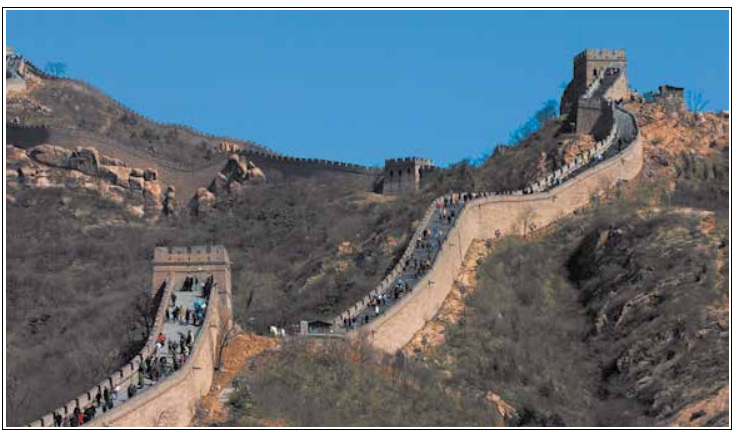Select impact starting with
commodities
China has been in the news a bit more than usual over the last month and the news has been unnerving. There is no doubt that a slowdown there will have indirect and selective effects on the global economy, not least because of the decisive end it brings to the commodities boom. Indeed, we have already been feeling its impact in cheap oil, which is a result of softening demand as well as structural shifts in supply. But reports of China’s collapse are greatly exaggerated.
Over the last 30 years working in and around China, the country and its rise has always been a fascinating and complex challenge for me personally and for Cedar’s clients. One thing I have learned is that the longer one engages with China the more it becomes clear that understanding what is really going on – not to mention predicting where it will go next -- is almost impossible.
Yet business is business and we all have to make a call. We do this using the best of the information available and, in some ways more importantly, drawing on experience and an accumulated understanding of China in all its dimensions – historical, social, cultural, political and economic. I wanted to take this opportunity to briefly share my views on the current turmoil and what it might mean going forward.
The Chinese equities rout is an overdue correction that should be viewed as a deflating bubble largely isolated from the broader economy.
In the year from June 2014 Chinese indexes rose more than 150% and quickly became disconnected from the fundamentals. Even after the sell-off, prices are still expensive given the risks. A still substantial overhang of marginbacked trades remains to be unwound so we can look forward to continued extreme volatility with some further downward pressure.
The Chinese stock market is not reflective of the broader economy. Over its short history, it has been a poor predictor of the broader economy. The wealth effect of the collapse will be limited as only about 5% of households hold stock. There are some concerns that many companies also gambled and are now in trouble as the plunge in values wreaks havoc on their balance sheets. For the moment, I believe these concerns are overblown.
It is worth keeping in mind the political dimension of this crisis, however. The Communist Party has built legitimacy around delivering the economic goods. As the economy slows, the Party will look for new sources of legitimacy, even if some of them prove ephemeral. The clumsy and ineffectual attempts earlier this summer to prop up the markets reflected Beijing’s view that the stock markets were a test of the government’s effectiveness.
Though few Chinese might be directly vulnerable in this rout, Beijing felt compelled to intervene because of the market’s symbolism. We may see more of this kind of politically driven intervention.
RMB depreciation is justified by fundamentals and will probably continue to a total 10% off-peak by the end of the year.
There is much speculation about the motives behind the decision to move the RMB to a managed float. Was it primarily designed to boost sagging exports, stem rapidly rising capital outflows or as a step toward establishing the RMB as a reserve currency? The move came at an opportune time given the economic and political context, serving all three objectives.
I believe the paramount motive was as an incremental reform toward eventually establishing the currency’s reserve status. Even a fall of as much as 10% is too small to substantially affect exports where exporters are under more pressure from high wages than they are from an appreciated currency. And while there may be a short-term effect on capital outflows, any expectation of further devaluation will actually accelerate capital flight.
For China’s leadership, securing reserve currency status for the RMB is a key long-term geopolitical policy objective. China’s central banker, Zhou Xiaochuan, has been a steady and strong advocate for forex liberalization and likely pushed this objective now because the benefits of depreciation softened resistance from powerful export industries.
We will likely see some further deterioration in the RMB but it will be managed and not likely exceed a total of 10% by the end of the year. With reserves topping $3.6 trillion, China has some buffer to defend its currency.
The Chinese economy is slowing, possibly to as low as 5%, but it is not collapsing and some fundamentals bode well for the longer term effort to rebalance.
Widespread concern that the Chinese economy is in trouble is fully justified but predictions of its imminent doom are exaggerated. For some time now Beijing has thus been trying to manage a transition to more sustainable growth driven by domestic consumption and by the services sector, with the knowledge that continued double-digit, manufacturing, export and investmentdriven growth is unsustainable. A fundamental rebalancing of an economy as large and complex as China’s is necessarily fraught and the road ahead will be bumpy to say the least.
The days of China as the reliable and perpetual engine of the global economy are past. The knock-on effects of China’s devaluation and stock market crash on global markets reflects this fundamental reassessment, which I believe is healthy and necessary.
All indications are that China’s actual growth this year will fall far short of Beijing’s 7% target. Though some analysts are projecting the first recession since economic reforms were launched more than 30 years ago, the consensus view is that growth will come in at around 5%.
By Chinese standards, this is a dramatic deceleration but it is still strong growth by global standards.
Furthermore, there are indications that the transition to more balanced growth is underway. Several years ago the services sector surpassed manufacturing as the largest component of GDP, now accounting for around 50% of the economy and growing at nearly 9% (versus manufacturing and construction growth of 6%). Retail sales are up over 10% through July. Wage growth remains a healthy 10%.
The one caveat to this relatively optimistic view is that Chinese data is notoriously incomplete and often misleading or inaccurate. Though vastly improved since my early days trying to decipher the Chinese enigma, political considerations can still distort economic data and a general lack of transparency both characterizes Beijing’s modus operandi and complicates our ability to understand what is going on. As a sidebar, I think this is a fundamental obstacle to China’s emergence as a truly modern economy, fully integrated with the world. It is this systemic lack of transparency that accounts for the market overreaction both inside and outside China.
Beijing’s political response to the turmoil is the real wildcard – all will depend on the Party’s view of risks to social stability.
Beijing’s immediate response to this summer’s turmoil is less important than how it tackles the longer term challenges as China rebalances its economy. Pushing through the reforms necessary for this transition will raise the risk of social unrest and if Beijing views this risk as too high it will delay reform and prolong the transition, risking economic stagnation and ultimately heightening the risk of real political and social instability. This is the Communist Party’s dilemma.
A little historical context might be helpful here. For at least a century up to the launch of Deng Xiaoping’s reforms in the late 1970s, China endured revolutions, wars, ideological mass movements and vast social dislocation as it struggled to adapt to a modern industrialized and global economy dominated by the West. The process was painful and enormously costly by all measures, not least in blood. And it was humiliating for a nation deeply convinced of its rightful place at the top of world civilization.
Over the last three decades the Communist Party has skillfully managed China’s rise and generally favored economic and social liberalization. The Tiananmen massacre shifted the locus of reform from the private sector to a kind of state corporatism that privileged stateowned enterprises in key industries, but the direction of policy was decidedly toward liberalization.
In doing this, the Party made an implicit compact: deliver sustained high growth and material reward in exchange for continued political monopoly. In the first decades of reform this was relatively easy as the liberation of pent-up energy and entrepreneurial drive released huge surpluses that were then plowed into infrastructure and industrial investments. Opening a vast pool of cheap labor to foreign investment jump-started the export sector and enabled the rapid absorption of capital and technology. These successful policies lifted more than 400 million people out of poverty and by the turn of the century catapulted China back into the ranks of global powers.
This story is important to bear in mind when evaluating the Communist Party’s political calculations during the next phase of reform. Rebalancing China’s lopsided and unsustainable economy will be painful. The Party’s two nonnegotiables – social stability and preserving the Party’s political monopoly - will dictate how quickly it rolls out reforms that are critical to this transition.
Reforming the state sector is one critical reform. State enterprises only deliver half the return on investment that their private sector counterparts deliver. They are heavily in debt, inefficient and many survive only through state subsidies. Consolidation and rationalization will drive many of these large enterprises out of business throwing millions out of work, risking social unrest. And these stateowned enterprises have emerged as a powerful constituency resisting reform.
But the Party understands the importance of pushing forward with these reforms. Xi Jinping’s surprisingly effective consolidation of power and crackdown on corruption are in part designed to lay the groundwork for this next phase of reform. There will certainly be disappointments, including possibly a recession in the next five years, but I think the odds are still in favor of success.
In sum, we should all take a deep breath and refrain from panicking. We are seeing the growing pains of an emerging economic and political superpower whose economy is maturing and normalizing. Like all economies, it will be subject to business cycles and occasionally fall into recession. What we are now witnessing is part of that process.
To read more such insights from our leaders, subscribe to Cedar FinTech Monthly View


